Types of Le Ma revolvers (Le Mat) for unitary cartridges
The emergence of unitary patrons has become a significant event in stories weapons. The invention of the cartridge did not remain unnoticed in the evolution of Le Ma revolvers (Le Mat).
At first, revolvers appeared, the drums of which were filled with hairpin cartridges, and the central barrels were still priming ignition.
Later a structure was developed that allows locking the central barrel and using hairpin cartridges for its equipment. The latest was the design of the revolver Le Ma chambered with a central ignition cap.
The manufacturers of Le Ma revolvers (Le Mat) for studs were various firms. This weapon, with the serial number 131, is one of about a thousand copies of Le Mat made in Belgium by Brevet (Brevete). The ramrod extractor of spent cartridges is fixed on the right side of the barrel. At the end of the handle there is a hinged ring for a revolving strap.
Octagonal upper trunk with markings on the left side of the "COL LA LEMAT BRTE 131". For the upper barrel, use 0.36 caliber pinfire cartridge. The central barrel 0.44 caliber, has a priming ignition.
The drum has through chambers with grooves to accommodate the studs of the cartridges. The surface of the drum for relief provided with valleys. For the equipment of the drum with a hairpin cartridge on the right side of the frame door is made. Switching the position of the striking part of the trigger, the shooter selected shooting from the upper barrel when the trigger struck the protruding studs of the cartridges or from the central barrel when the trigger struck the primer.
Another revolver Le Ma Brevet (LeMat Brevette Pinfire / Percussion Revolver) with serial number 3023, is equipped with 11 mm caliber studs, the central barrel is 20 smooth-bore caliber. The ramrod extractor is also located on the right side of the frame.
Metal surfaces are silver, without bluing. The shank of the handle has a tide with a transverse hole.
The marking on the upper edge of the stem is the text "COLONEL A. LEMAT BREVETE"
Le Ma's hairpin revolvers of French origin sometimes differ not only in marking, but also in appearance. This weapon, produced by Canat & Co, has a slightly curved front frame, the drum surface is cylindrical. The ramrod is missing, but judging by the location of the ramrod ring, it was probably located under the lower barrel.
The marking on the barrel is the text "JF Gouery Canat & Co Syte LeMat Bt SGDG Paris".
Compact revolvers were sometimes in great demand as a weapon of self-defense than their longer and more massive counterparts. For this reason, the appearance of Le Ma Ma (Baby LeMat pinfire revolver) hairpin “baby” revolvers is not surprising.
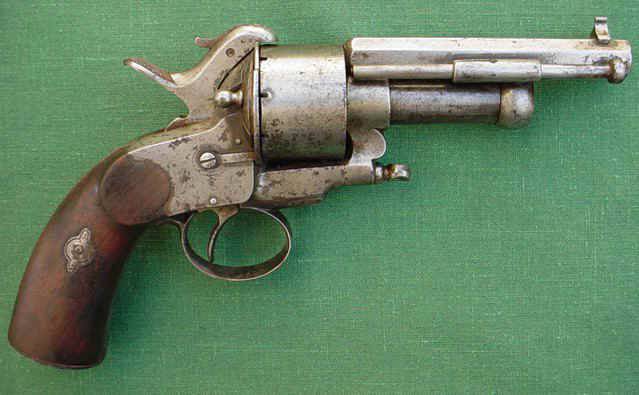
The authors of some catalogs of antique weapons claim that the Baby LeMat revolvers were made no more than a hundred. This revolver with the serial number 3188 is equipped with a drum for 9 mm hairpins. Upper barrel length 102 mm. The lower barrel has a caliber 12 mm. Inflammation at the lower trunk cap.
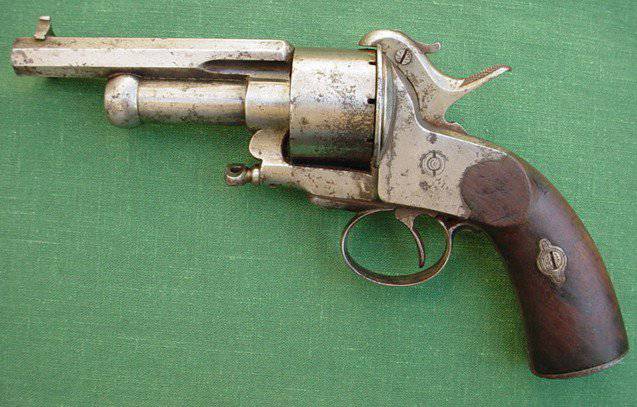
The front frame frame is attached to the base of the frame with a screw. On the front of the drum there are holes for the mechanism for fixing the drum. Marking on the right side of the trunk "COLL A. LEMAT BRte". Brands on the details of weapons indicate the Belgian origin of the revolver.
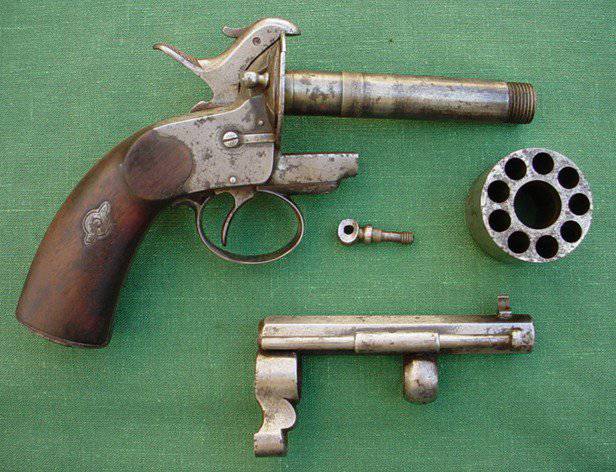
Comparing the French Le Maat (Baby LeMat) revolver with the previous Belgian one can notice some differences. So on the right side of the barrel of the French revolver a ramrod tube is installed, in which is placed a ramrod - extractor. The door to access the drum chambers differs in both the shape and location of its supporting spring. The surface of the drum, in contrast to the Belgian "children's" revolver, is cylindrical without valleys.
The screw fastening the front of the frame to its base in the French version of Le Ma has a figured shape, it can be unscrewed simply by hand, without using a screwdriver. The lower part of the handle shank is flat without a protrusion or ring for a revolving strap.
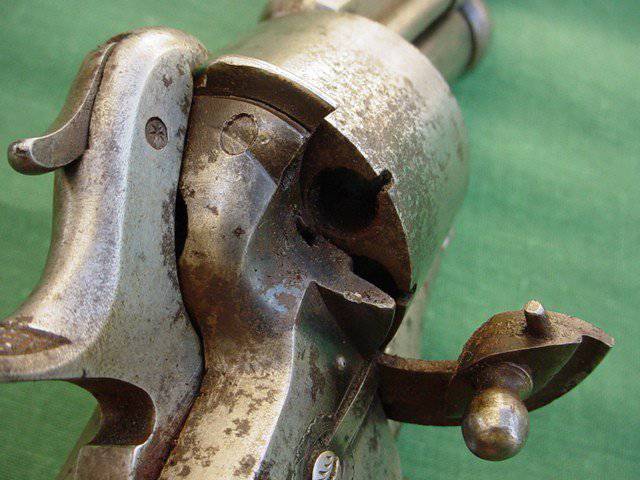
An incomplete disassembly of the weapon demonstrates that the overall basic design of the Le Ma revolvers of French and Belgian origin is not different. The total length of the weapon represented in the photo is 232 mm, the length of the upper barrel is 102 mm.
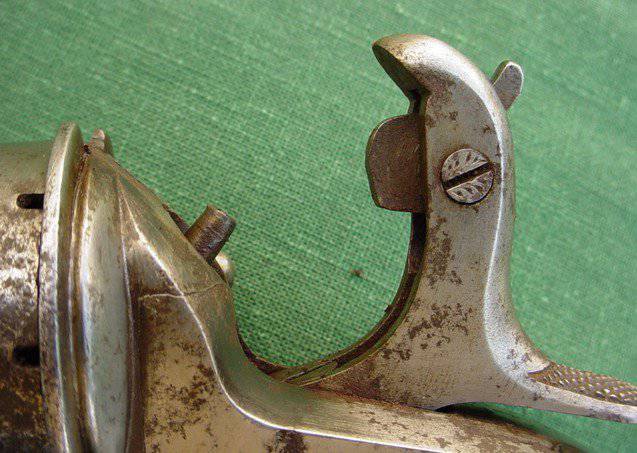
On the rear section of the drum there is a ratchet for the mechanism of rotation and undercut in the upper parts of the chamber to accommodate the studs of the cartridges. The front of the drum has no holes for the locking mechanism. The drum is designed to accommodate 8 caliber studs.
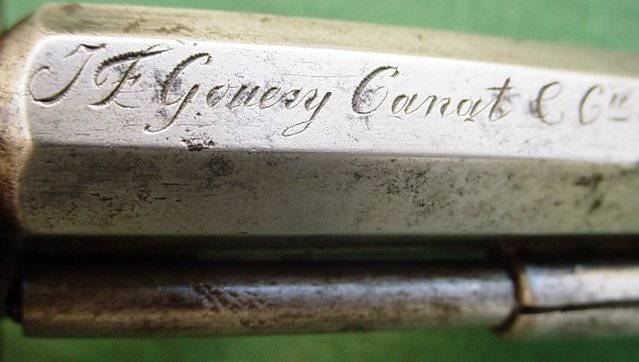
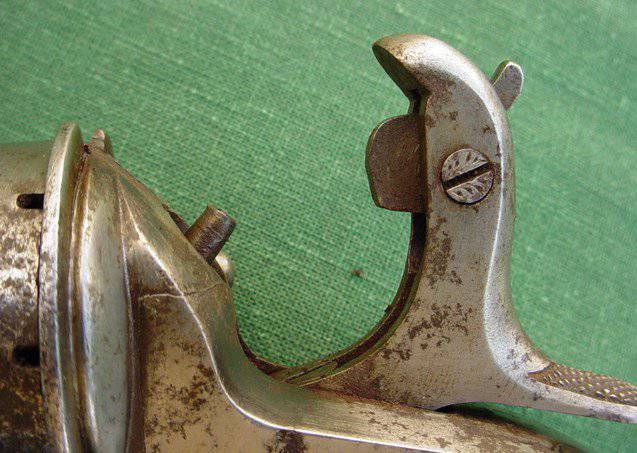
The door of the frame opens to the right-down and has a pin for a more secure fit in the frame. Lower blistering priming. When translating the trigger lever to the upper position, the hammering part of the trigger becomes opposite the brand tube. In this position, when the trigger is released, it strikes the primer, thanks to which the shooting comes from the lower barrel.
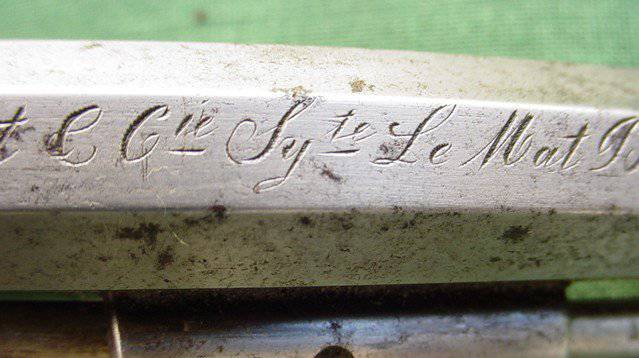
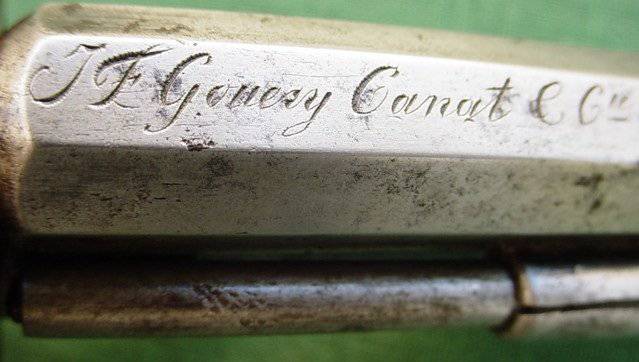
The markings on the top of the Baby LeMat revolver are in italics and are the text "JF Gouery Canat & Cie Sy-te LeMat Bte Sgdg Paris".
As with other stud revolvers, ensuring safety when handling the studs in Le Mat is facilitated by the protrusion of the breech frame along the contour of the drum. This protrusion protects the studs of cartridges from accidental blows.
The capsule ignition of ammunition by the end of the 19 century was morally obsolete, even with reference to the smooth central barrel of the Le Ma revolver.
Soon, a revolver was developed and launched, the central barrel of which was equipped, like the drum, with hairpin cartridges.
The basic design and layout of Le Mat has not changed, but it was very unusual to use a yellow metal (probably brass) to manufacture not only the frame, but also the central barrel of the revolver.
The use of the hairpin cartridge in the central barrel required changing not only the design of the breech of the revolver, but also the trigger. The shock of the trigger, switched to the position for firing from the lower barrel should strike not in the horizontal direction, but from top to bottom. This was achieved by increasing the length of the lever of the hammer part of the trigger and changing its configuration.
For the equipment of the revolver, the door providing access to the drum chambers was opened upwards. The breech was equipped with an additional door that opens to the right-up. When opening the door, the shooter could remove the cartridge case and install a new hairpin cartridge in the chamber of the lower barrel. This door also locked the lower barrel during firing.

On the basis of Le Ma pin caps revolvers, revolver carbines (LeMat Pinfire and Percussion Revolving Carbine) were developed.

Le Ma's (Le Mat) revolving hairpin and cap carbines usually have an upper rifled 11 mm barrel and a lower rifled 0.58 barrel of caliber.
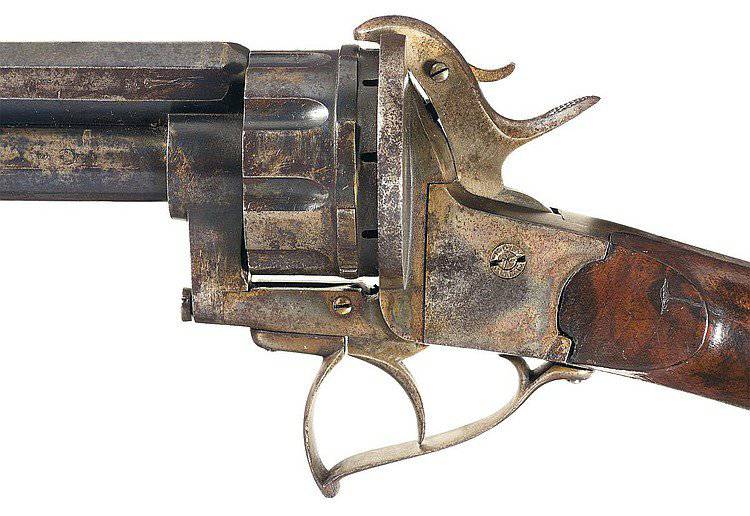
Carabiners are structurally very similar to Le Ma revolvers (Le Mat), with the exception of long barrels, the presence of a butt and the unusual shape of the trigger guard. The drums of carbines often have valleys and protrusions for the mechanism of fixing the drum.
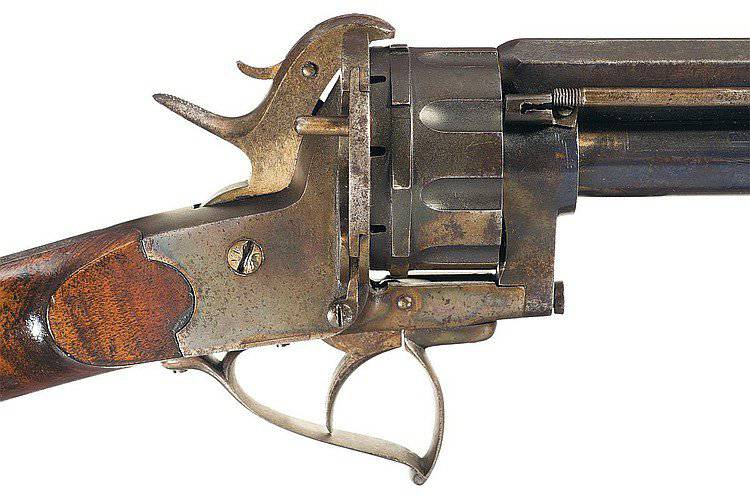
The door to access the drum chambers is located on the right side of the breech frame. The handle is installed at the top of the door. Opening occurs right-down. The ramrod is fixed to the right of the trunk.
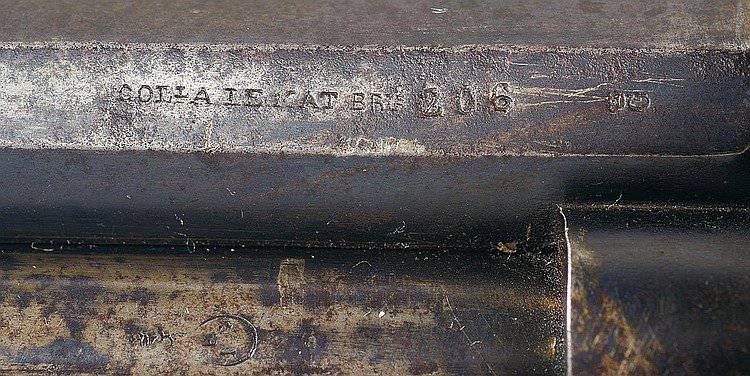
On the left side of the barrel, shown in the photo of the revolving carbine, the serial number “206” and the marking “COLLA LEMAT BRTE” are marked.
Le Ma revolver under the central ignition cartridge (Le Mat Centerfire Breechloading Revolver) appeared after the end of the US Civil War. In December 1869 of the year, LeMa received a patent under the number 97780 for the design of a double-barreled revolver. Both guns were designed to fire central ignition cartridges with a metal sleeve. This variety is sometimes referred to as the Le Ma 3rd model, centerfire, third revolver model.
The appearance of the revolver has undergone significant changes. The changes affected the shape of the frame, handles, trigger guard, trigger. Even the ring for the revolving strap moved from the shank of the handle to the bottom of the frame in front of the trigger guard.
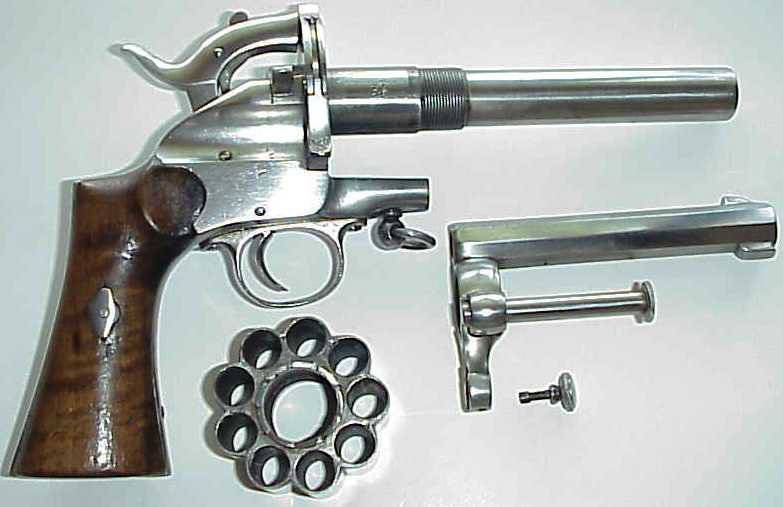
Despite external differences, the basic layout and design of the revolver has not changed. Le Ma of the third model still consists of the back and front parts of the frame, a drum and two trunks.
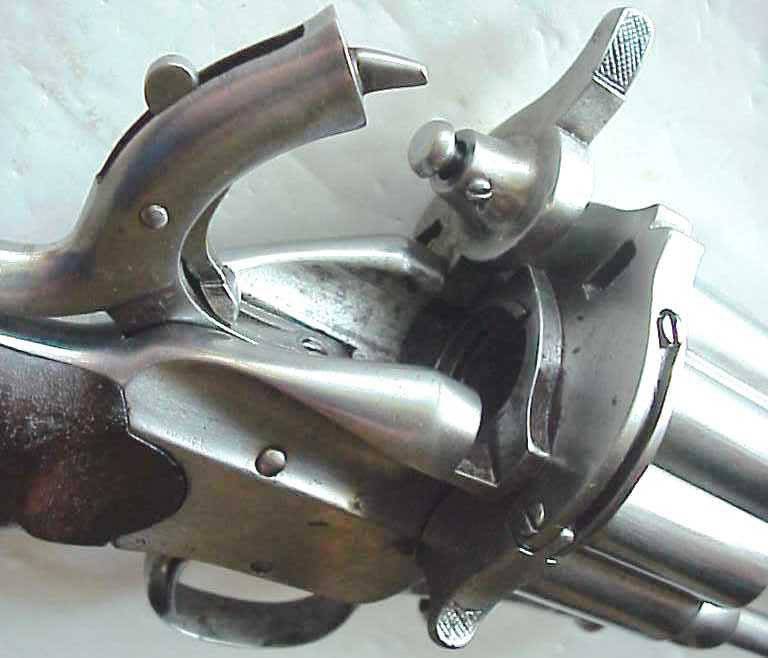
To enable firing of central ignition cartridges from the upper barrel, in the breech of the frame, opposite the upper drum chamber, a rectangular opening is made. The upper part of the trigger is pointed and performs the function of the hammer. The central trunk is closed by a special pivoting door, in which the drummer is mounted. When the trigger lever is shifted to the upper position, its lower shoulder strikes the protruding part of the firing pin of the central trunk, the firing pin breaks the cap — a shot is fired from the central stem.
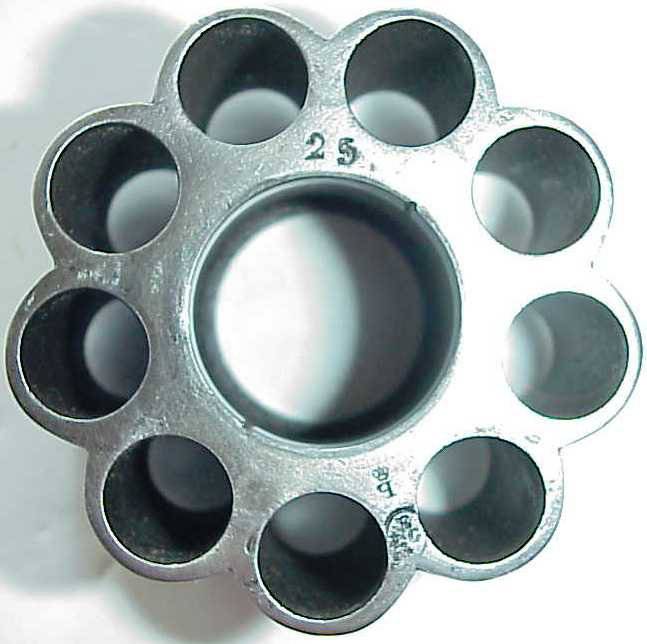
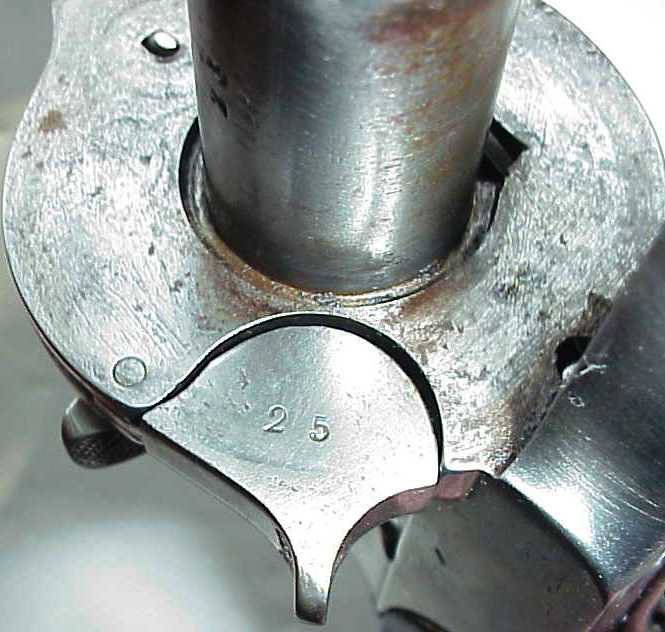
On the front end surface of the drum there is a serial number and Belgian stamps. The serial number of the 25 is printed on the frame's pivot door.
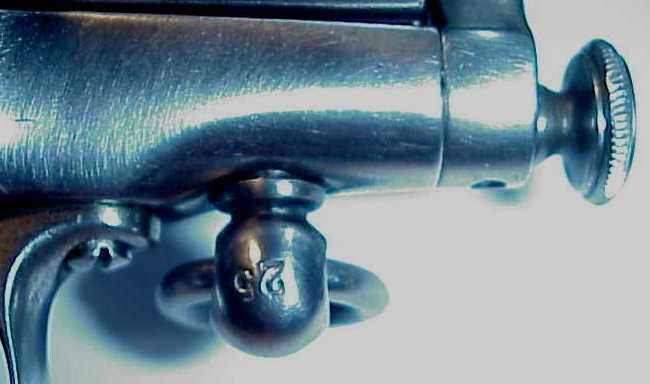
In addition, the serial numbers are printed on many other parts of the weapon, even on the basis of the fastening of the ring for the revolving strap.
Marking "Colonel Le Mat Patent" on the upper edge of the trunk is made in capital and upper case letters in a beautiful Gothic font.

Traditionally, based on the design of Le Ma revolvers (Le Mat) of the third model, carbines for central ignition cartridges were developed.
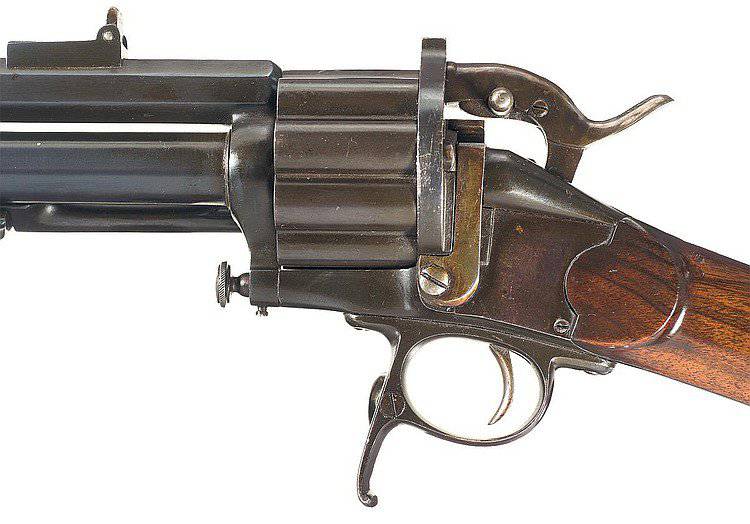
The aiming devices of the revolving carbine are a two-pillar adjustable rear sight and a front sight fixed on the front rings connecting the upper and lower trunks.

The Le Mat carbine trigger guard has a projection in the lower part to which the ring is attached to the right.
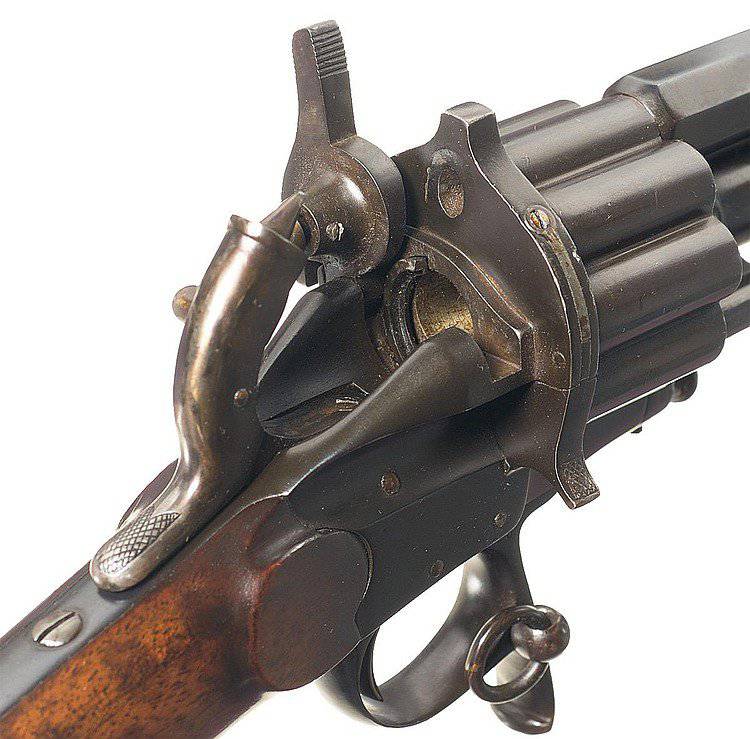
The central trunk of Le Ma revolving carbines (Le Mat) is locked with a special door with a built-in drummer. The door rotates up and left on the axis and gives access to the chamber of the lower barrel. The door on the right side of the breech frame opens to the left and upwards, providing access to the chambers of the drum.
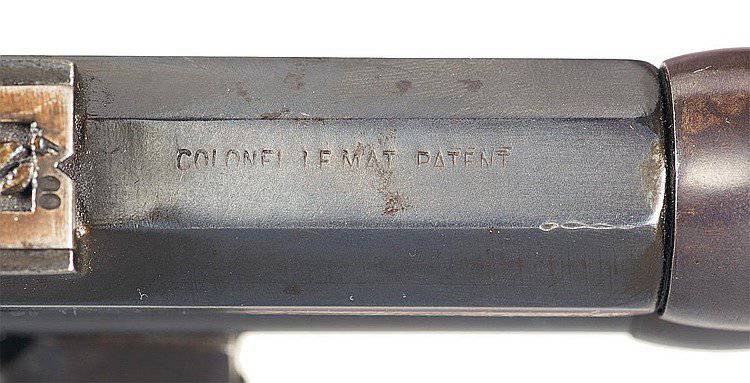
In the upper part of the chamber of the revolving carabiner is marked “COLONEL LEMAT PATENT”.
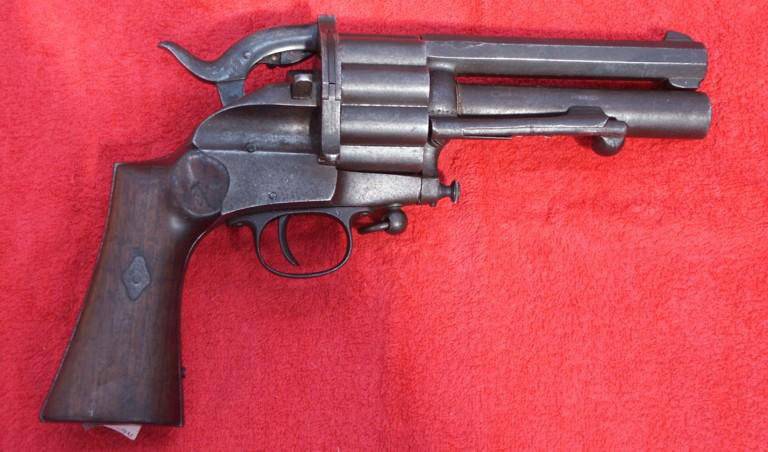
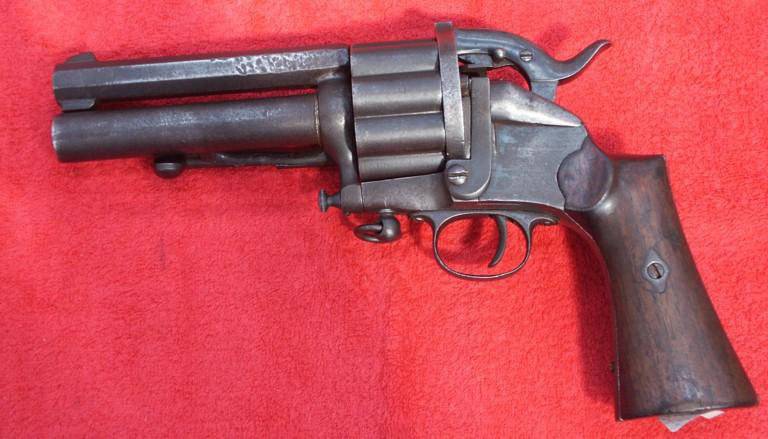
Of course, Le Ma's revolvers and revolving carbines, both for studs and for central ignition cartridges, are in great demand among collectors. Prices for these weapons start from 4 thousand dollars and often exceed 15-20 thousand dollars.
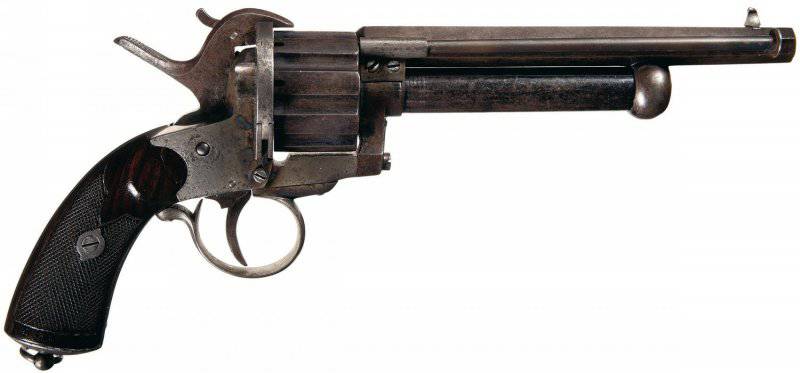
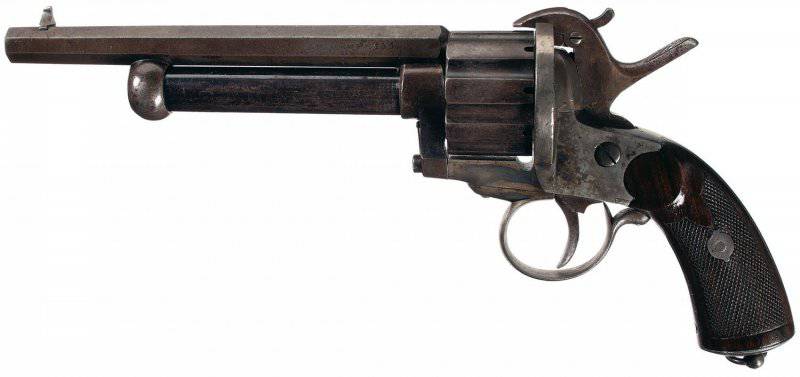
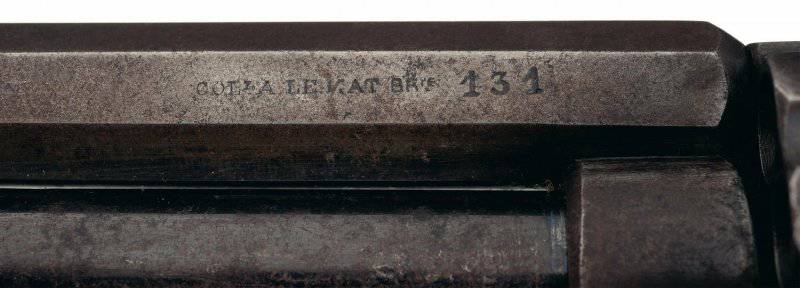
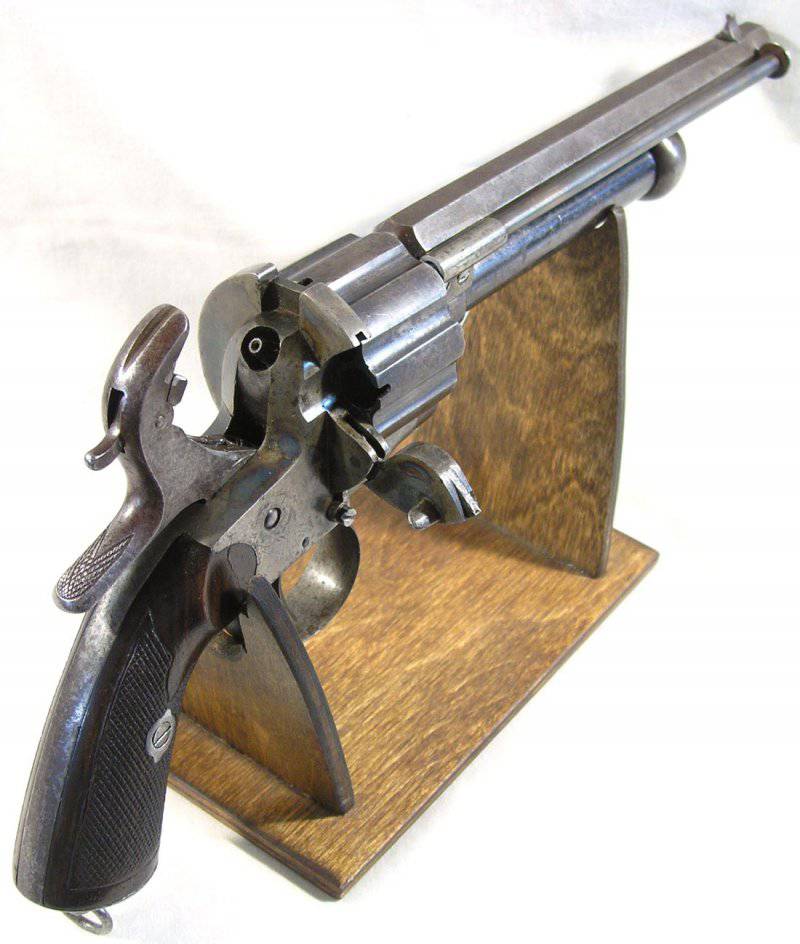
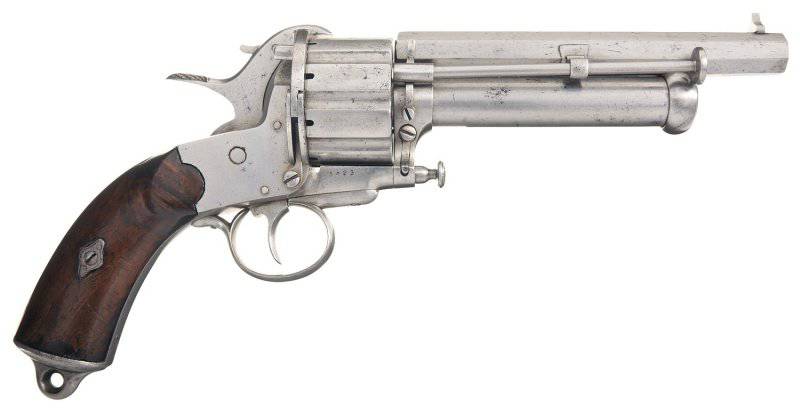
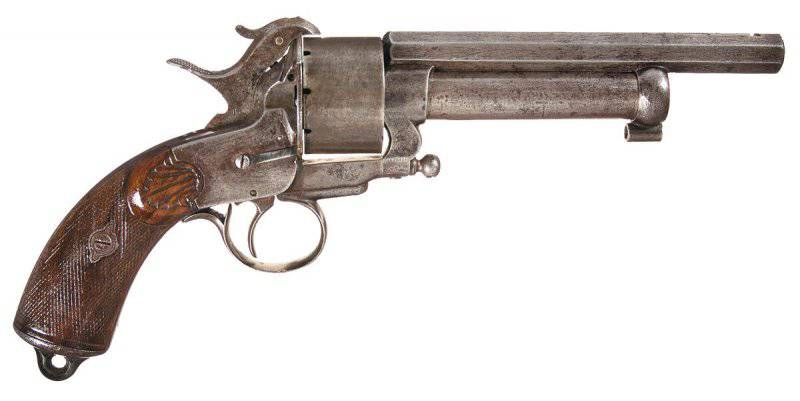

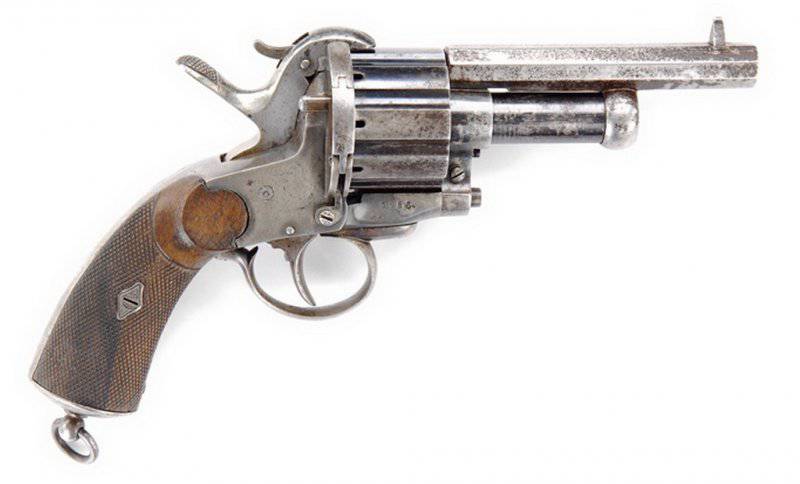
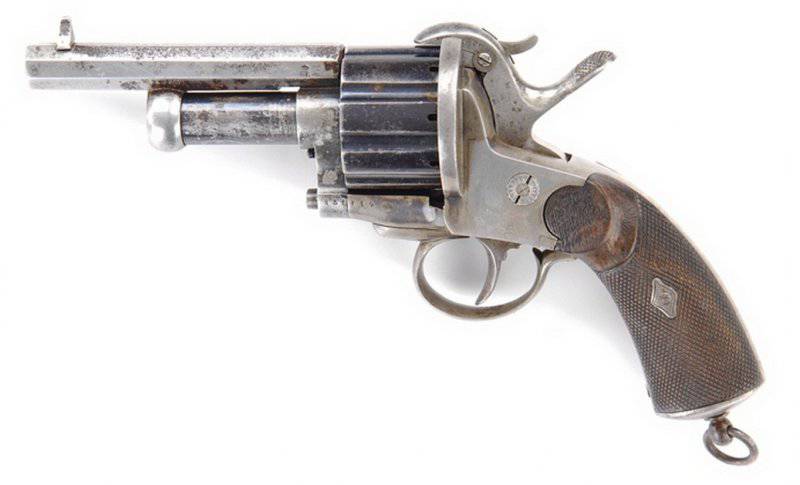
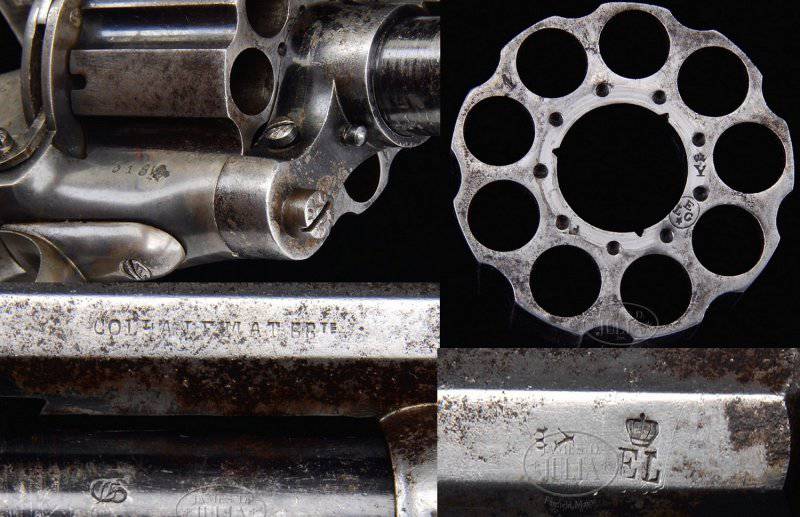
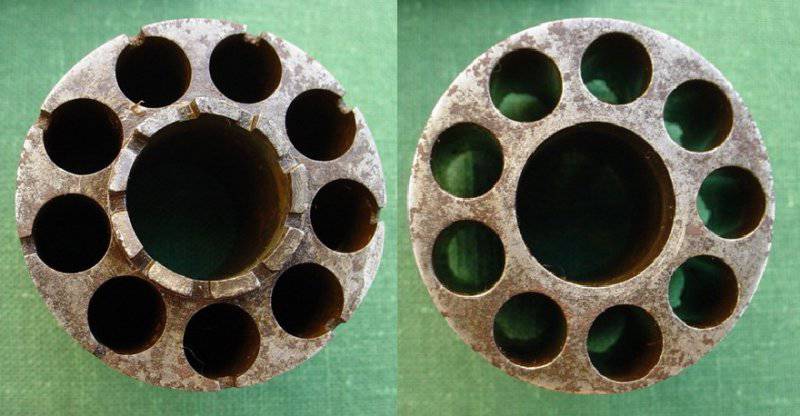
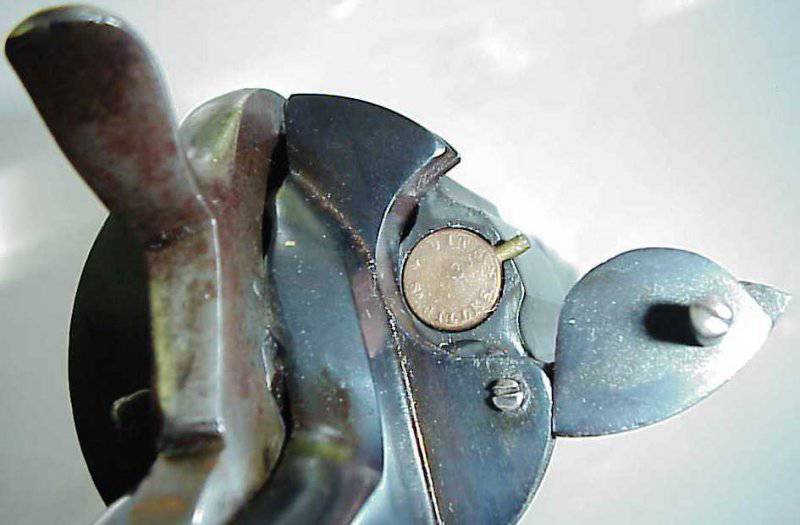
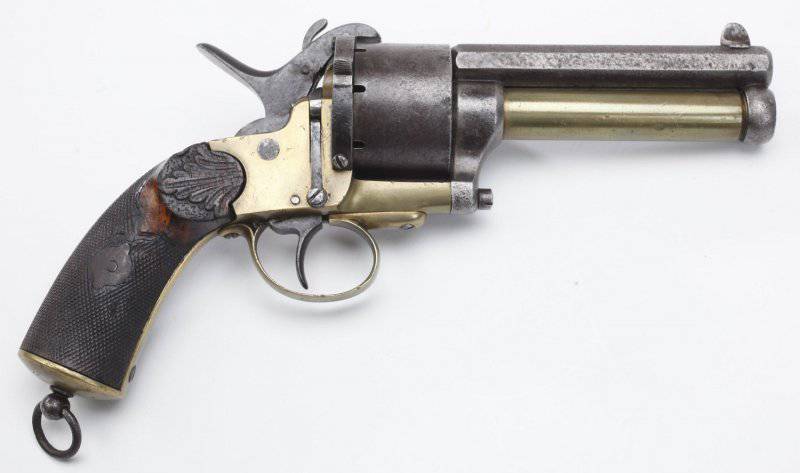
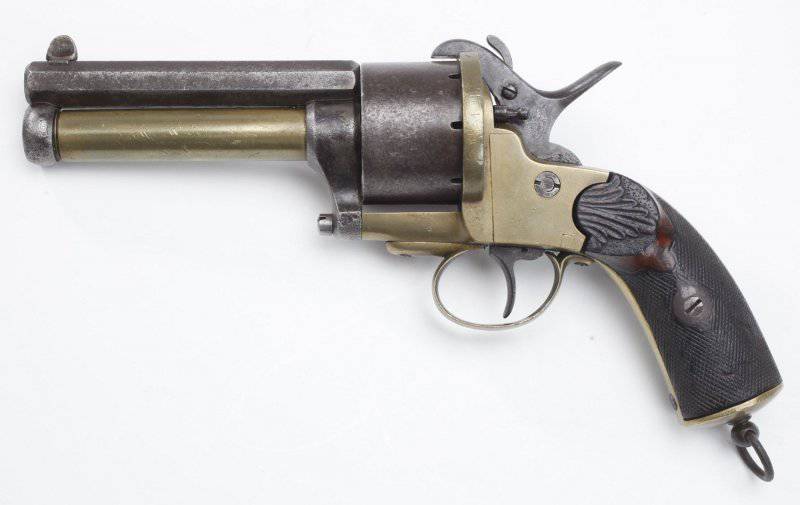
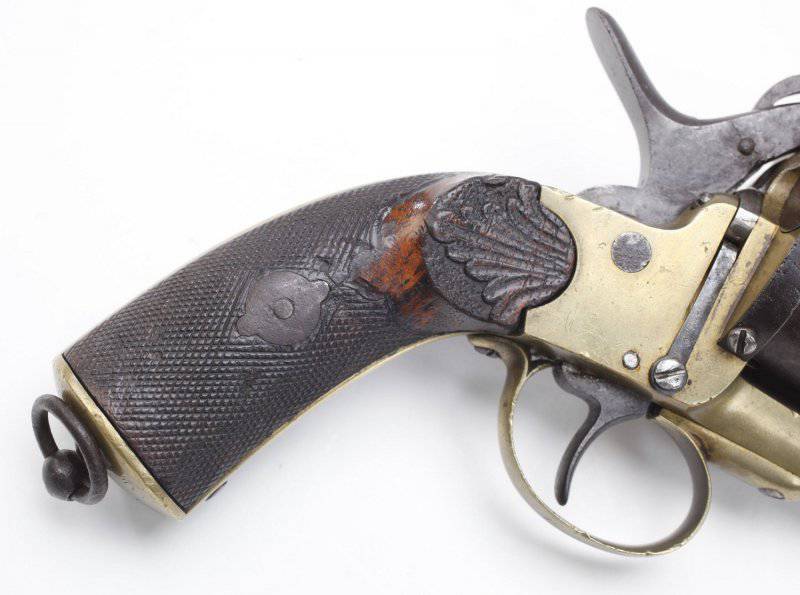
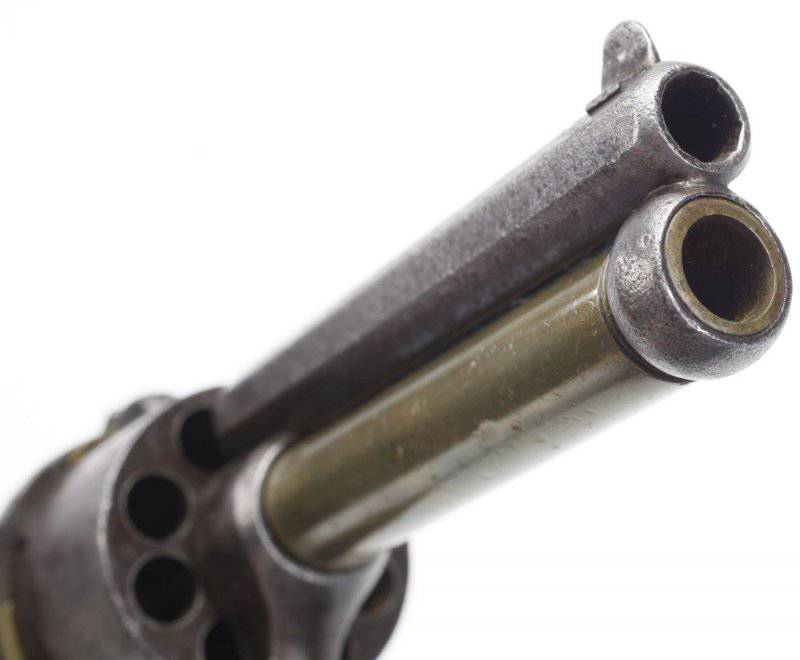

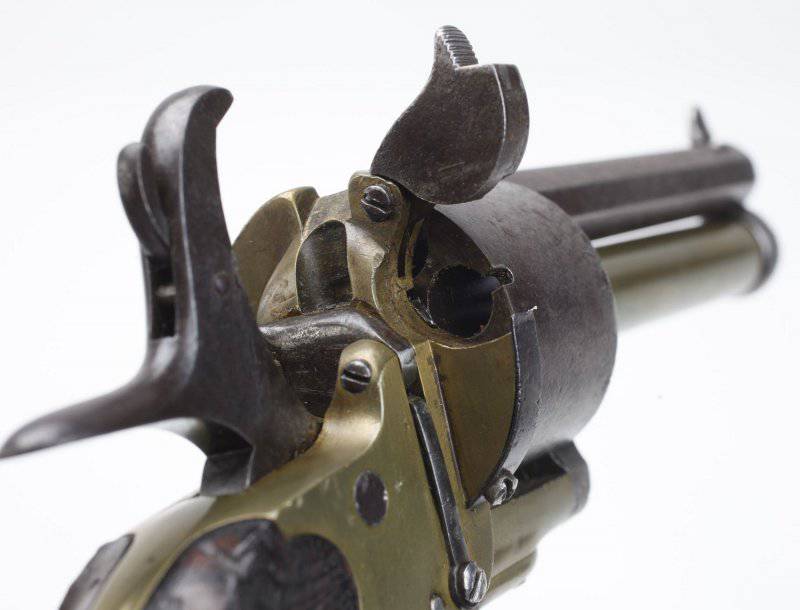
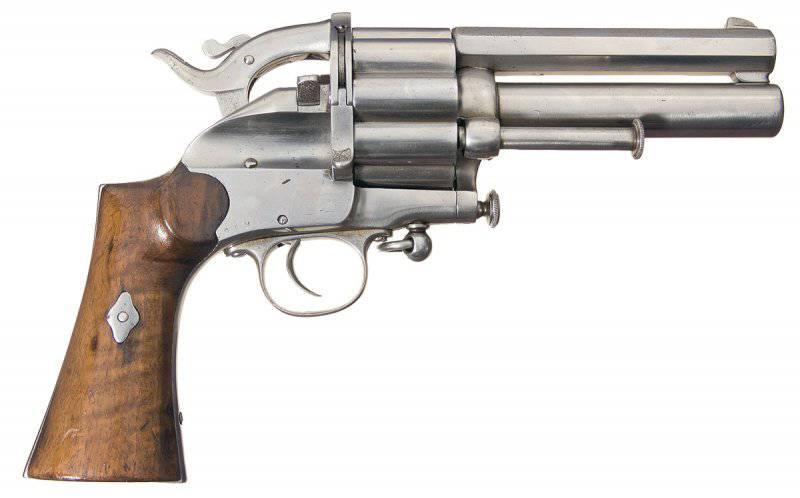
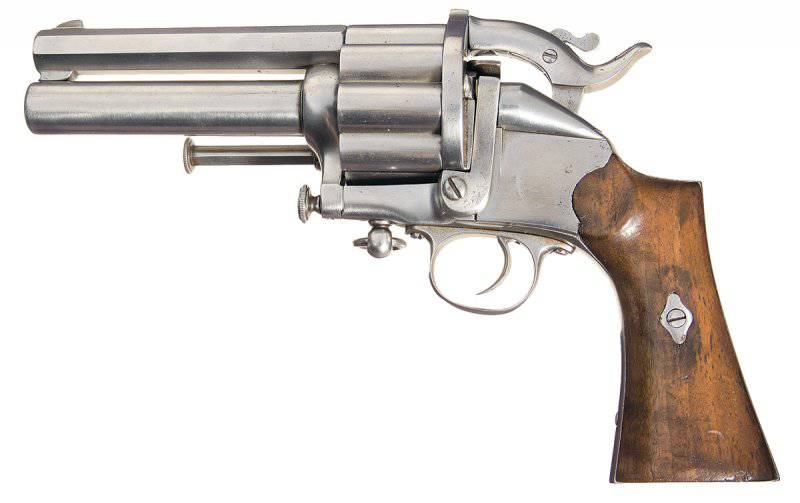
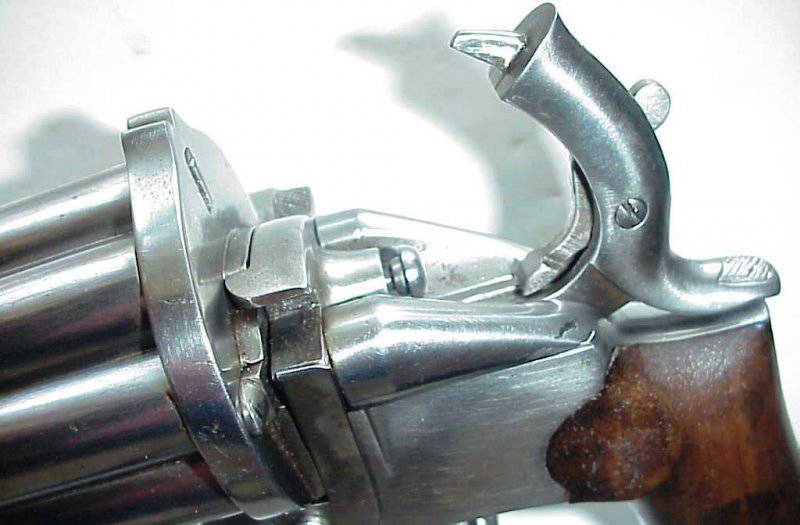
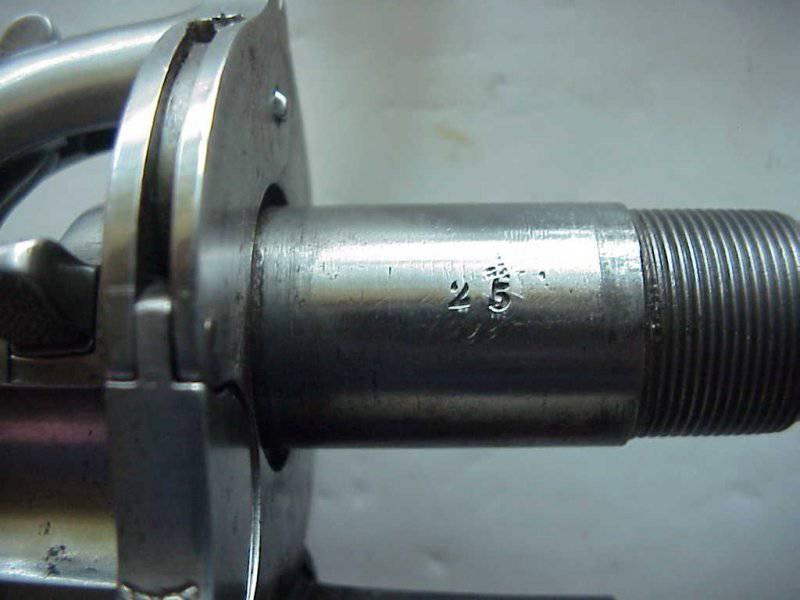
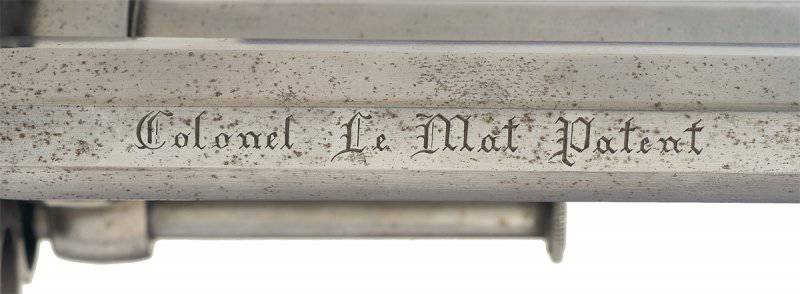
Information